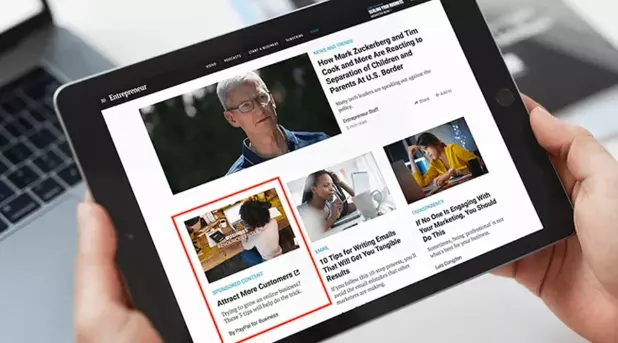In the ever-evolving digital advertising landscape, choosing ad formats is an influential decision for advertisers and publishers alike. Advertisements are the lifeblood of many online platforms, especially for a website. As a publisher, monetizing your content through advertising is crucial for sustaining your online presence and generating revenue. It provides the essential capital to maintain and grow digital spaces.
However, the challenge lies in delivering ads that enhance the user experience rather than alienate the audience. In fact, some ad formats have gained notoriety for being intrusive and annoying. Therefore, publishers must understand which ad formats users dislike and why they should avoid them.
This post will look at unpopular ad formats to avoid, as well as why they are unpopular. In addition, we will suggest a few simpler and more effective advertisement alternatives to consider that people also like.
Table of Contents
Importance of Choosing the Right Ad Format
For publishers, selecting the right ad format is a paramount decision that can significantly impact their revenue streams and overall success. In an increasingly competitive digital advertising landscape, the choice of ad format is pivotal to capturing and retaining audience attention. The importance of this decision cannot be overstated; it directly affects user engagement and ad performance.
Most importantly, in this era of ad-blockers and consumer ad fatigue, the right ad format can not only enhance user experience but also foster a positive relationship between publishers and their audience. Since there are various ad formats, understanding the nuances of various ad formats, their suitability to different content types and their alignment with target audiences is vital and can be a game-changer.
The Most Disliked Ad Formats
Users frequently turn to ad blockers as a result of intrusive or frustrating ad formats. It can cause publishers to lose a significant amount of money. Understanding the ad formats to avoid is crucial for website owners and publishers as it empowers them to make wise decisions and build harmonious relationships with their audience.
Let’s have a look at the most disliked ad formats that website owners and publishers should consider avoiding.
Pop-up ads
Pop-up advertisements are notorious for disrupting user experience. They often obscure the page’s content and require visitors to actively close them because they open in a separate window or on top of the primary content. Pop-ups are generally despised since they can be bothersome and make navigating more difficult.
A study by e-Consultancy found that pop-up ads were among the most disliked ad formats, with 73% of respondents expressing their annoyance with them.
Insider tip: Consider using exit-intent pop-ups that trigger when users are about to leave your site, offering them valuable content or deals rather than interrupting their browsing experience.
Autoplay video ads
Autoplay video ads are another ad format that frequently frustrates users. These ads start playing automatically, often with sound and can disrupt the user’s browsing experience. The impact is even more significant for mobile users, as it can consume their data and lead to slower page loading times. According to Nielsen Norman Group, 86% of users dislike auto-playing video ads.
Insider tip: If you opt for video ads, consider using user-initiated video, where the user decides when to play the video. It provides a more user-friendly experience.
Full-screen overlay ads
Full-screen overlay ads take over the entire screen when users visit a webpage. They require users to take action, such as clicking a tiny “X” to close the ad or waiting for a timer to expire. These ads are seen as a roadblock to accessing the desired content. According to a study by Media in Canada, full-screen overlay ads are among the most ignorable ad formats.
Interstitial ads
Interstitial ads are full-page ads that appear before users can access the main content they intended to view. These ads force users to wait or take action to skip them, which can be frustrating. This format is highly annoying on mobile devices, where screen real estate is limited, and users have a lower tolerance for delays. In a study by Target Video, interstitial ads were ranked as the second most annoying mobile ad format.
Insider tip: If you use interstitial ads, ensure they provide value to the user, such as promoting relevant content or discounts, to mitigate user frustration.
Invasive push notifications
While not a traditional ad format, invasive push notifications are a common annoyance. Websites and apps that aggressively request permission to send push notifications can lead to a negative user experience. In some cases, users might block all notifications from a site, including content updates they might have wanted. It is essential to optimize push notifications with caution and respect for the user’s choice.
Insider tip: If you use push notifications, give users options to choose the type and frequency of notifications they receive. This customization can enhance the user experience.

Pop-under ads
Pop-under ads, like pop-ups, open in new browser windows behind the current page, often going unnoticed until users close their session. Though seemingly less intrusive, multiple pop-unders can irritate users. It can frustrate advertisers and creative providers. Their hidden nature reduces visibility, engagement and lower conversion rates.
Ad blockers often target them, diminishing the advertiser’s reach and return on investment. Multiple pop-unders can irritate users, potentially causing them to avoid websites using these ads, adversely affecting publisher revenue. Crafting effective pop-under advertisement content presents creative challenges, adding to the frustration.
Deceptive native ads
Native ads are designed to blend seamlessly with the content of a website, making them appear as though they are part of the natural content. While native ads can be effective when done well, deceptive native ads that mislead users are highly disliked. When users feel they have been tricked into clicking on an ad rather than genuine content, it can damage the trust they have in the website and the brand behind it.

Alternatives to Annoying Ad Formats
Understanding the ad formats to avoid is essential, but knowing what alternatives are available is equally important. The following are some user-friendly ad formats for desktop and mobile that can help a website owner maintain a positive user experience while monetizing the content effectively.
In-Content Ads
- These ads are a dream if you’re worried about user experience. They blend into your content so readers stay engaged.
- They’re less likely to be blocked by ad blockers, which means more revenue for you.
- Plus, they’re mobile-friendly. As more users shift to mobile, this is a big win for your bottom line.
Banner Ads
- These are your bread and butter for a steady income. They’re easy to set up and reliable.
- They can be placed in various spots on your site, giving you flexibility.
- However, they’re not the most engaging, so they’re best used in combination with other formats for maximum revenue.
Video Ads
- If your site has video content, this is a goldmine. Video ads generally have higher CPM rates.
- They capture attention more than static ads, leading to better engagement and potentially more revenue.
- Just keep in mind that video ads require more bandwidth and could slow down your site if not optimized well.
Native Ads
- If you’re looking for ads that don’t look like ads, this is your answer.
- They blend in seamlessly and can command higher prices from advertisers because they’re more engaging.
- They’re also less likely to be flagged by ad blockers, so you keep more of your revenue.
Text Ads
- These are straightforward and easy to implement, making them a good option for beginners.
- They’re less intrusive, so they won’t harm the user experience.
- However, they’re not the most eye-catching, so they’re best used in areas where they can be contextually relevant to the content.
Interactive ads
- Interactive ad formats, such as expandable banners or rich media ads, encourage users to interact with the content. These ads expand or reveal additional information when clicked or hovered over.
- Interactive ads are ideal for conveying complex messages or engaging users with games, quizzes, or product exploration.
Dynamic ads
- Dynamic ads are personalized to each user based on their browsing behavior, preferences, or demographics. They can display tailored content, such as recommended products or relevant information.
- These ad formats are highly effective for e-commerce websites.
Mobile Banners (320×50 and 300×250)
- Mobile banners are small, rectangular ads that appear at the top or bottom of a mobile webpage or app. They are among the most common ad formats for mobile and are well-received due to their unobtrusive nature.
- These ad formats are suitable for displaying concise messages, promoting products, or driving users to specific landing pages. Their compact size ensures they do not disrupt the user experience.
It Is All About Balance!
Choosing the proper ad formats is crucial for maintaining a positive user experience and ensuring the sustainability of your online platform. By considering the ad formats to avoid and opting for user-friendly alternatives, you can balance revenue generation and user satisfaction.
Remember that user engagement and trust are paramount in the online world. By respecting your audience’s preferences and providing valuable and relevant content, you can create a win-win situation where both you and your users benefit. Keep an eye on evolving trends and user feedback to adapt your advertising strategy and maintain a healthy, long-term relationship with your audience.























